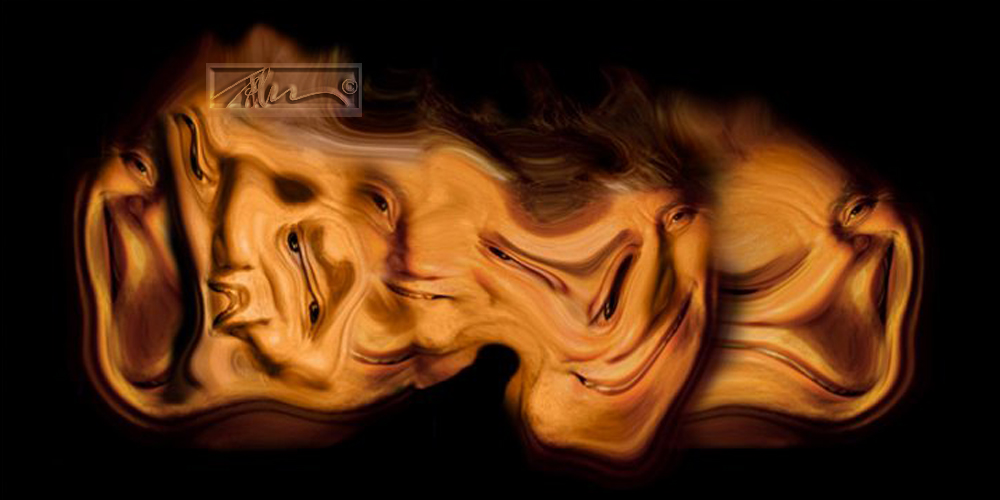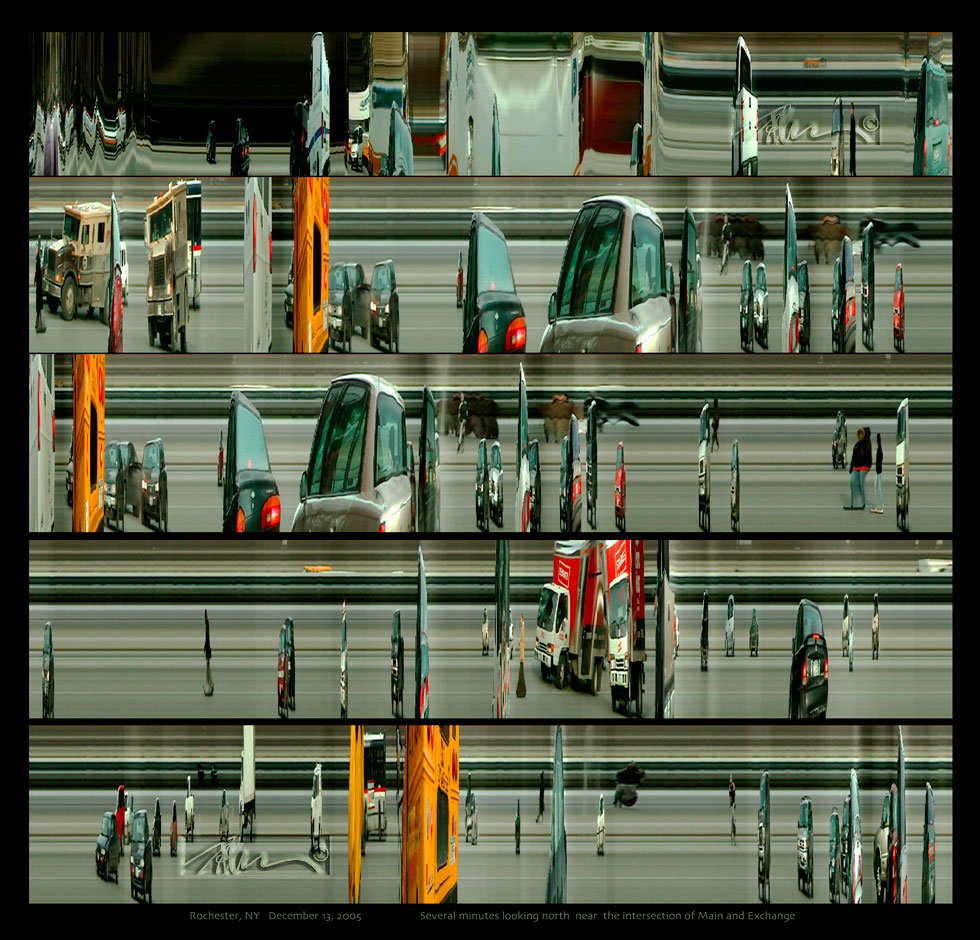I guess I’ve always had an experimental side to my image making. Photography seemed to be somewhat malleable even in the days of film. Besides being attracted to the ways in which images could be changed, I found that through manipulation, at least a good portion of my work became distinctively my own.
Back then, I used to use distortion and other techniques to render images, which were a bit off center from what many, were producing. Polaroid lent itself to manipulations that other films did not. For instance the frames we see today on many computer images are relics of older processes such as Polaroid. The way one peeled the emulsion during processing could yield interesting processing marks. Polaroid materials could also be manipulated in numerous ways by pressing the surface or using alternative methods to manipulate the developer pod. With Polaroid you could write and draw on the final image or transfer the emulsions to other surfaces. Some of my early works were done by cutting the still wet films and passing them though a graphic arts press while sandwiched with art paper. Once dry, they were unique one of kind images, which had been morphed into abstract photographic shapes.
I found that film allowed me to add marks of different types to add a difference to the printed results. For instance, I would deliberately scratch the film to add a texture and aging to the image. Often I added text by scratching the surface of the film base and/or the emulsion to provide a description or place. At times, I added color to my black and white negatives by coloring them with markers. I have intentionally printed negatives that were scratched, burned, torn, dropped in dirt or covered with dust.
It was digital imaging that gave me the most capability for experimenting with my imagery. In fact it has opened the floodgates to incredible manipulation possibilities. Digital made it feasible to do just about anything I might imagine and even things I could not have dreamed of. From the very beginning, I played with what might be possible with the computer and a camera. Within the scope of my imaging tools I keep pushing the envelope.
Over the years, I have created images that seem to be turned inside out, some that were created in software used for 3d, a number that have been turned into fractals and others, which are made by modifying the camera, the subject, the lighting and/or the software used. I have even combined some of my older experimental imagery with new techniques using the computer, by scanning or reshooting them with a digital camera and reworking them with software. A good part of this has been a learning period for understanding what might be achievable. But out of all that experimentation, I have produced some pretty amazing work.
It has been a way to play with changing technology and countless images. It is my way of growing.
However, manipulation for the sake of manipulation is not the intended goal. Instead, as with a painter’s hand, the use of experimental techniques should help define the image and ultimately enhance the message that I am after in my work.
To me, distortion or manipulation is a way to underscore the meaning of the photographed subject. It is a way to recreate the fabrication and deception I see and feel in the real world.
For me, the deformation of an image has the potential of heightening the experience of the work by transforming it into something that can signify the distorted realities of the man-altered world in which we live. It can be used to support the underlying meaning of the image by accentuating the disorder and confusion of modern existence.
In my mind, when used well, manipulation serves as exclamatory punctuation.
Please have a look at some of my other posts here.
NOTICE of Copyright: THIS POSTING AS WELL AS ALL PHOTOGRAPHS, GALLERY IMAGES, AND ILLUSTRATIONS ARE COPYRIGHT © JOHN NEEL AND ARE NOT TO BE USED FOR ANY PURPOSE WITHOUT WRITTEN CONSENT FROM THE WRITER, THE PHOTOGRAPHER AND/OR lensgarden.com. THE IDEAS EXPRESSED ARE THE PROPERTY OF THE PHOTOGRAPHER AND THE AUTHOR.





